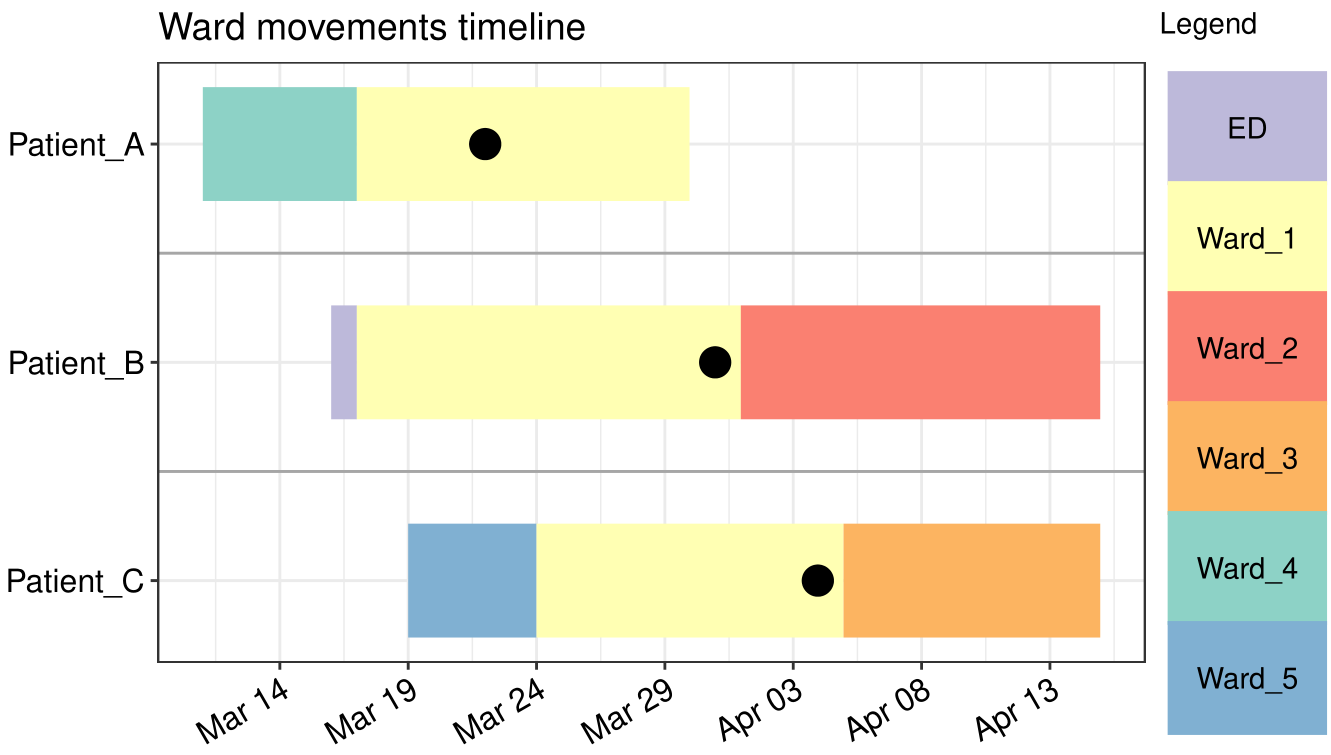

A library for creating time-based charts, like Gantt or timelines.
Possible outputs include ggplots, plotly
graphs, Highcharts or data.frames. Results can be used in
the RStudio viewer pane, in R Markdown documents or in Shiny apps. In
the interactive outputs created by vistime() and
hc_vistime() you can interact with the plot using mouse
hover or zoom. Timelines and their components can afterwards be
manipulated using ggplot::theme(),
plotly_build() or hc_*functions (for
gg_vistime(), vistime() or
hc_vistime(), respectively). When choosing the
data.frame output, you can use your own plotting engine for
visualizing the graph.
If you find vistime useful, please consider supporting its
development:

Feedback welcome: sa.ra.online@posteo.de
To install the package from CRAN, type the following in your R console:
install.packages("vistime")This package vistime provides four main functions, the
first three allow you to draw a timeline with Plotly, Highcharts or
ggplot2, the last one outputs the pure optimized data frame ready for
plotting.
Plotly chartstimeline_data <- data.frame(event = c("Event 1", "Event 2"),
start = c("2020-06-06", "2020-10-01"),
end = c("2020-10-01", "2020-12-31"),
group = "My Events")
vistime(timeline_data)
Highcharts timelinestimeline_data <- data.frame(event = c("Event 1", "Event 2"),
start = c("2020-06-06", "2020-10-01"),
end = c("2020-10-01", "2020-12-31"),
group = "My Events")
hc_vistime(timeline_data)
This is facilitated by the highcharter package, so, this
package needs to be installed before attempting to produce any
hc_vistime() output.
ggplot2 outputtimeline_data <- data.frame(event = c("Event 1", "Event 2"),
start = c("2020-06-06", "2020-10-01"),
end = c("2020-10-01", "2020-12-31"),
group = "My Events")
gg_vistime(timeline_data)
data.frame output if you want to draw yourselftimeline_data <- data.frame(event = c("Event 1", "Event 2"),
start = c("2020-06-06", "2020-10-01"),
end = c("2020-10-01", "2020-12-31"),
group = "My Events")
vistime_data(timeline_data)
#> event start end group tooltip col subplot y
#> 1 Event 1 2020-06-06 2020-10-01 My Events from <b>2020-06-06</b> to <b>2020-10-01</b> #8DD3C7 1 1
#> 2 Event 2 2020-10-01 2020-12-31 My Events from <b>2020-10-01</b> to <b>2020-12-31</b> #FFFFB3 1 1You want to use this for the intelligent y-axis assignment depending
on overlapping of events (this can be disabled with
optimize_y = FALSE).
During COVID-19 2020, @wlhamilton used
gg_vistime() for visualizing patient ward movements as
timelines in order to investigate possible hospital acquired infections.
See his
github for the code.
